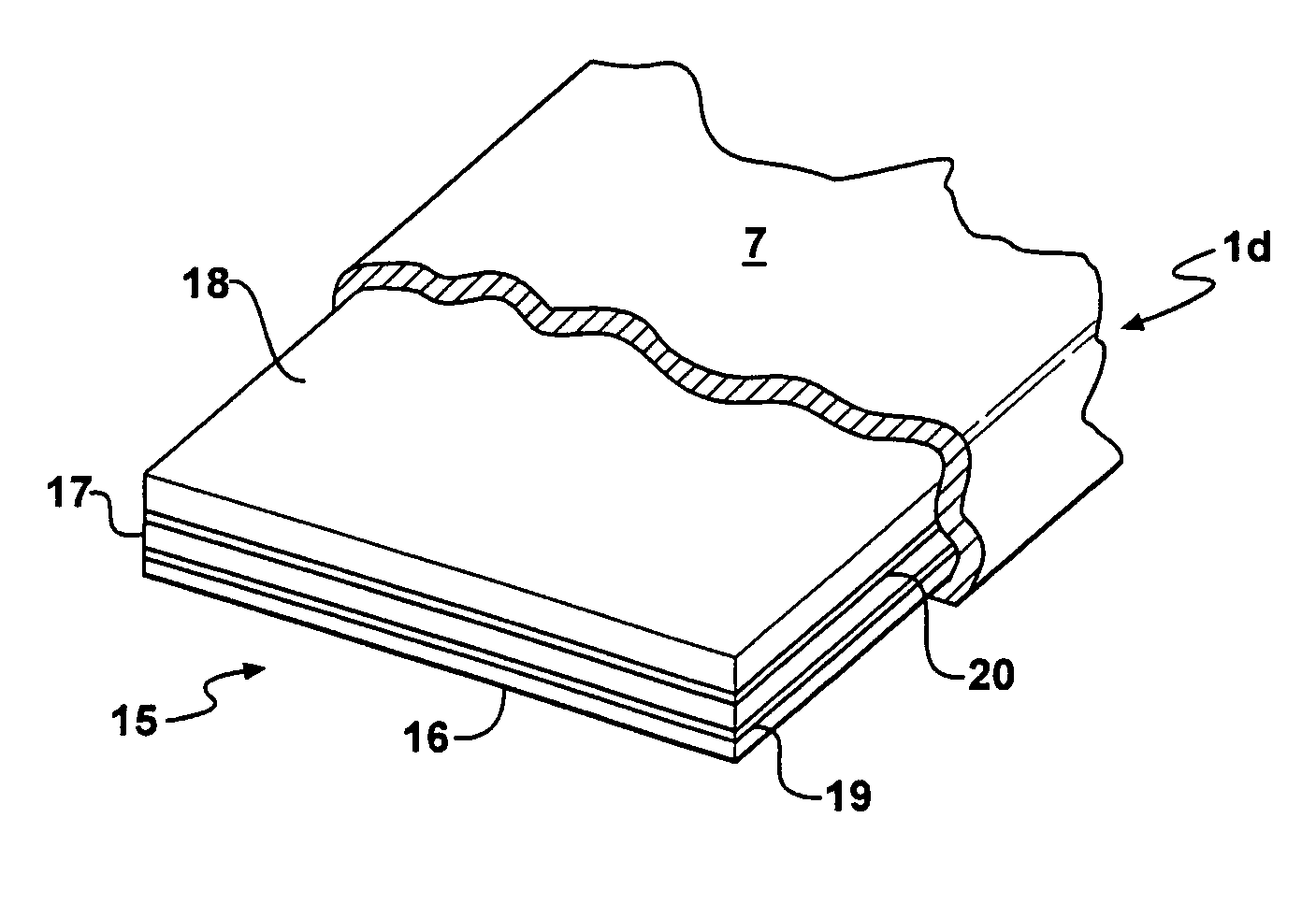Reinforced pad and method of making
- Summary
- Abstract
- Description
- Claims
- Application Information
AI Technical Summary
Benefits of technology
Problems solved by technology
Method used
Image
Examples
Embodiment Construction
[0028]A cushioning pad constructed in accordance with the embodiment disclosed in FIGS. 1 and 2 is designated generally by the reference character 1 and comprises a composite body 2 formed of two correspondingly shaped foam layers 3 and 4 between which is sandwiched a reinforcing sheet 5 having a configuration, in plan, corresponding to that of the layers 3 and 4, but being substantially thinner than each of the latter.
[0029]Each of the layers 3 and 4 has substantially uniform isotropic mechanical properties and may be formed from polymeric foam material such as urethane, olefin, vinyl nitrile, rubber, or other similar material which is readily deformable in its length, width, and thickness axes or dimensions and is elastically recoverable from a deformed condition upon removal of the deforming force. The compressive stiffness and other mechanical properties of the material forming the layers are variable, as is well known, but if the finished pad is to support or position a human, ...
PUM
| Property | Measurement | Unit |
|---|---|---|
| Length | aaaaa | aaaaa |
| Thickness | aaaaa | aaaaa |
| Width | aaaaa | aaaaa |
Abstract
Description
Claims
Application Information
 Login to View More
Login to View More - R&D
- Intellectual Property
- Life Sciences
- Materials
- Tech Scout
- Unparalleled Data Quality
- Higher Quality Content
- 60% Fewer Hallucinations
Browse by: Latest US Patents, China's latest patents, Technical Efficacy Thesaurus, Application Domain, Technology Topic, Popular Technical Reports.
© 2025 PatSnap. All rights reserved.Legal|Privacy policy|Modern Slavery Act Transparency Statement|Sitemap|About US| Contact US: help@patsnap.com



